Measuring angles and directions
We can conduct a measurement based on distances only (using tape or EDM) in order to obtain a map of a surveyed area or to establish BP. Such method is called trilateration.
With equipment such is a theodolite, we can usually get much more accurate description of surveyed area. Theodolite is an instrument to measure horizontal and/or vertical angles.
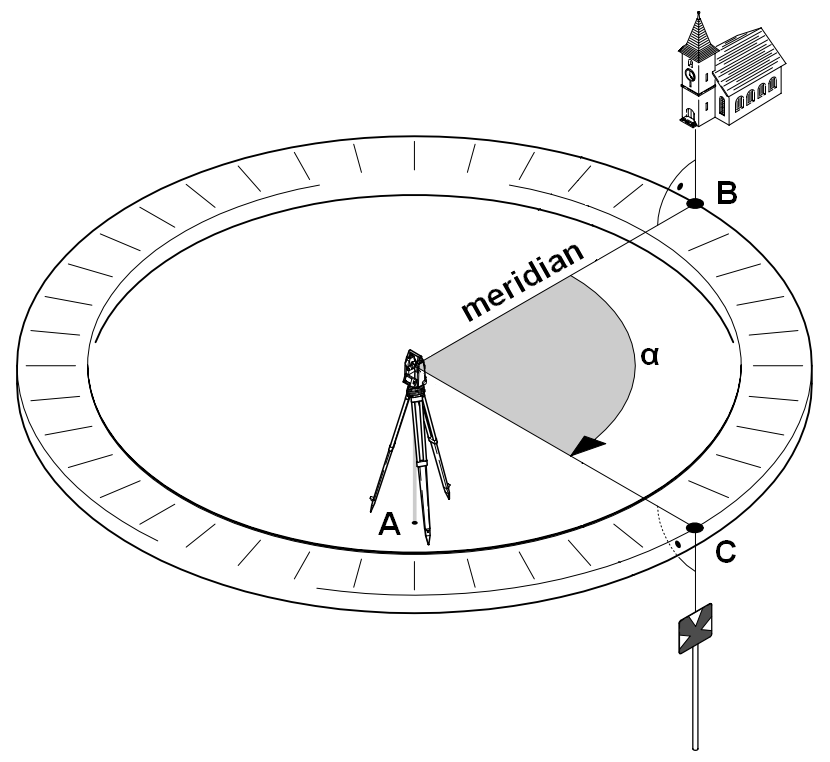

Vertical angles are usually needed to move over vertical obstacle and for trigonometric leveling (explained in other chapter).
Vertical angles
Horizon is parallel to the earth surface, and zenith is perpendicular to the horizon. Vertical angles are being taken from zenith or horizon, both method are usually supported by modern instruments.
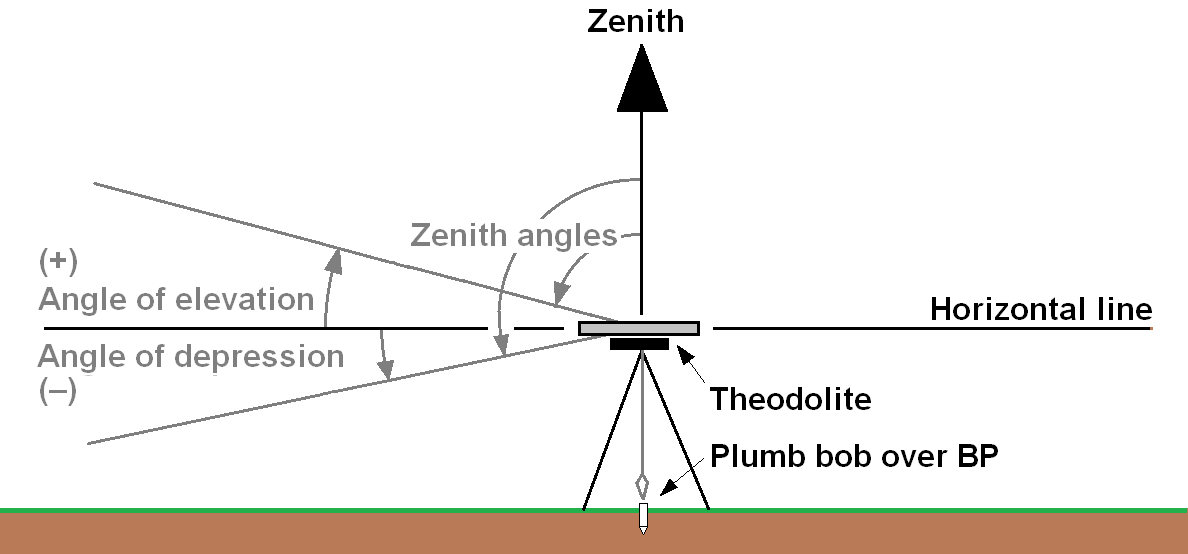

Horizontal angles
Angle can be measured
- clockwise (angle to the right) or
- counterclockwise (angle to the left).
Further
- Interior angle is measured inside closed polygon,
- exterior angle is measured outside close polygon.
Sum of interior and exterior angle is 360°
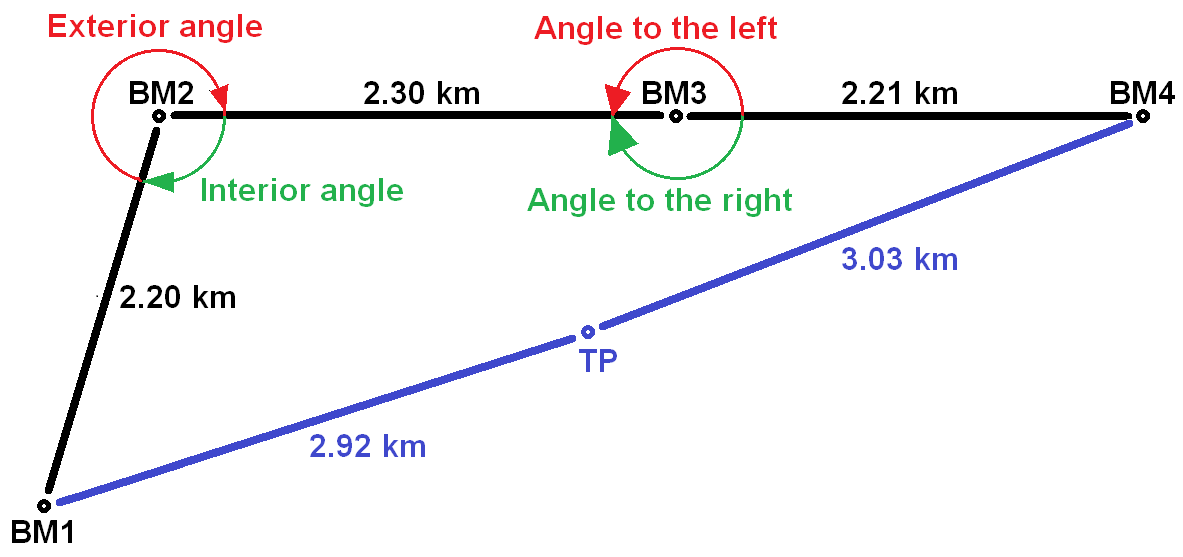

The side of the angle measured needs to be clearly noted in the field book. It is also a good practice
- to adopt one way only of taking measurements, e.g. always take interior angles;
- to have both interior and exterior angles taken to check values (to avoid blunders),
Azimuth
The angles taken in the field have context within the network of points being measured. They have no relation to earth coordinates. Azimuths are computed clockwise from geographic north.
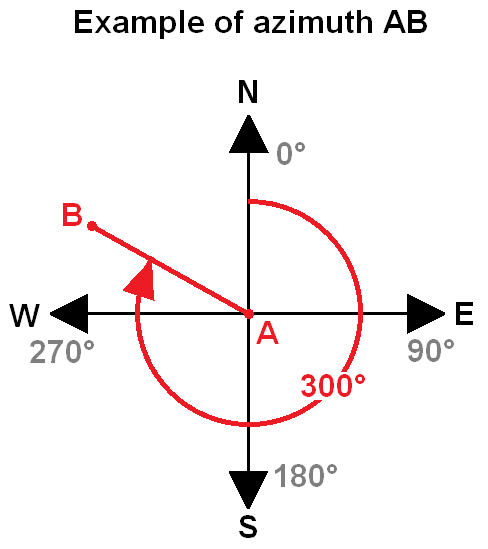
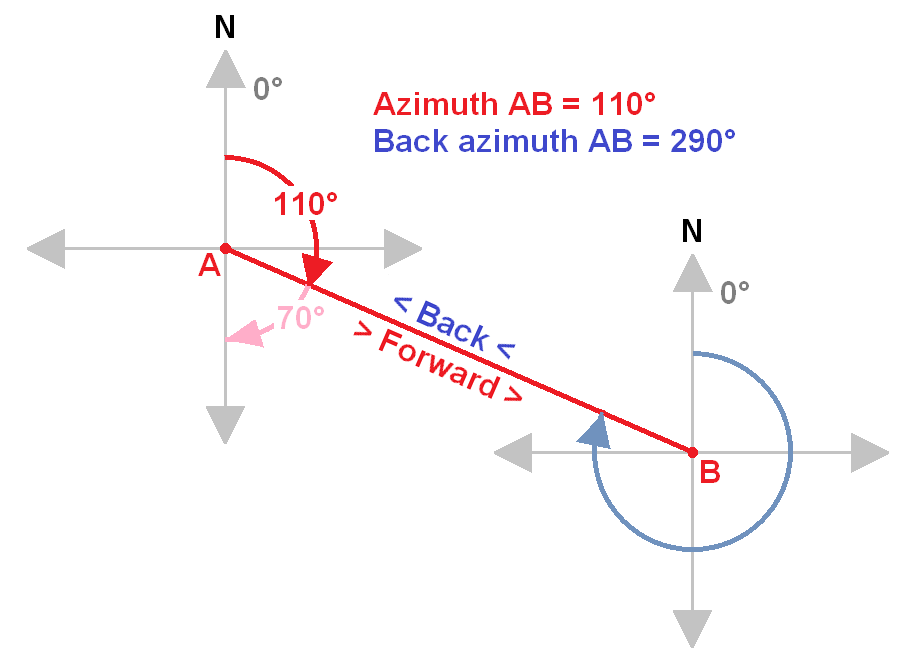


2—Back azimuth of AB
Theodolite
Theodolite is a telescope mounted on horizontal and vertical protractors. Its purpose is to measure vertical and/or horizontal angles.
Precision depends on the type and is usually from
- ±0.1 seconds (good quality theodolite used for geodetic survey) to
- ±0.1 minutes (i.e. 6 seconds—typical theodolite).
Theodolite can be used to evaluate horizontal readings for leveling but usually with lower accuracy than level instrument will do.
Look into the history
The Great Theodolite
In 1782 Jesse Ramsden started 3 years project of theodolite (picture above), later known as The Great Theodolite. The First Great Theodolite was nearly 1 m in diameter, and its weight was 90 kg.
It could read horizontal angles with accuracy of 1 second and vertical angles with accuracy of 5 seconds by means of attached microscopes. It served at least several years until lightweight, The Second Great Theodolite, was invented by Ramsden.
Classic mechanical theodolite
On the picture above is a mechanical double circle theodolite from 1910. Its telescope length is 29 cm. Mechanical theodolites use more circles (vernier) to enhance precision of reading:
Setup
Tripod setup
- Equipment has to be set precisely over BP. Use handlevel, setup the tripod over the positioning mark at a convenient height.
- Suspend the plumb-bob or release the laser mark (depends on the model).
- Re-adjust the tripod over the positioning mark by moving all three tripod feet by the same amount in the same direction.
- Firmly fix the tripod. Press the legs into the ground.
Theodolite setup
All parts of equipment are made of precise quality and must be always taken with increased care. That applies especially for theodolite (but applies surveying equipment in general).
- Place the theodolite on the tripod head, screw centering screw while holding instrument. Let the position be loose so theodolite still can slide around tripod head.
- Looking through the optical plummet, focus the centering index mark. Slide the theodolite on the tripod head until the reference mark is centered in the optical plummet.
- Fully tighten the centering screw.Look through the optical plummet again and adjust the theodolite foot screws for alignment with the reference mark.
Level the theodolite
Once the theodolite is leveled, double check optical plummet to make sure it is still centered. If not, repeat steps above.
Measuring horizontal angle
- When theodolite is setup, point to backsight (BS).
- Zero the instrument. Write actual zero into field book (might be not exact zero).
- Free the motion and point to foresight (FS).
- Tighten the motion and use screw for fine adjustment.
- Read the angle, write into field book.
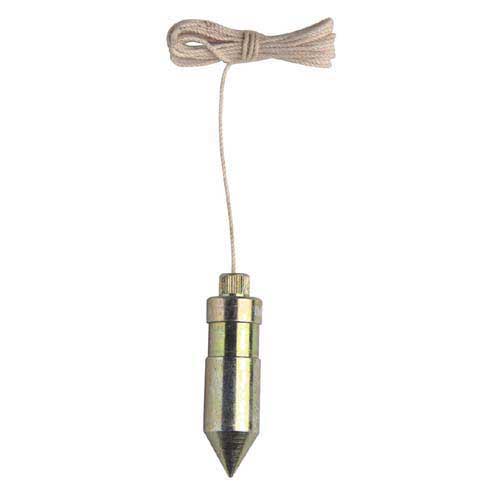

Measuring horizontal angles by repetition (mechanical theodolite)
More reliable reading of angle value is made by repeating the measurements. The first angle is taken and written into field book. Then telescope is pointed back to BS (with locked motion of value). Measurement to FS is made again then, angle is accumulated. Usually after finishing 6 cycles angle is written into field book again. The accumulated angle size is divided by 6 to figure out value of angle.
Telescope is pointed back to BS (with locked motion of value). Measurement to FS is made again then, angle is accumulated.
Measuring horizontal angles by repetition (digital theodolite)
More reliable reading of angle value is made by repeating the measurement. The first angle is taken from BS to FS and written into field book. Then telescope is rotated against trunnion axis and pointed to FS. Measurement back to BS is made again then and the result is taken as an average of both angles taken..
The first angle is taken from BS to FS and written into field book. Then telescope is rotated against trunnion axis and pointed to FS. Measurement back to BS is made again then and the result is taken as an average.
| Station B | BS to A | FS to C | Angle ABC |
|---|---|---|---|
| Reading from left | 0° 00' 00" | 33° 27' 15" | 33° 27' 15" |
| Reading from right | 180° 00' 15" | 213° 27' 20" | 33° 27' 05" |
| Average | 33° 27' 10" | ||
Horizon closure
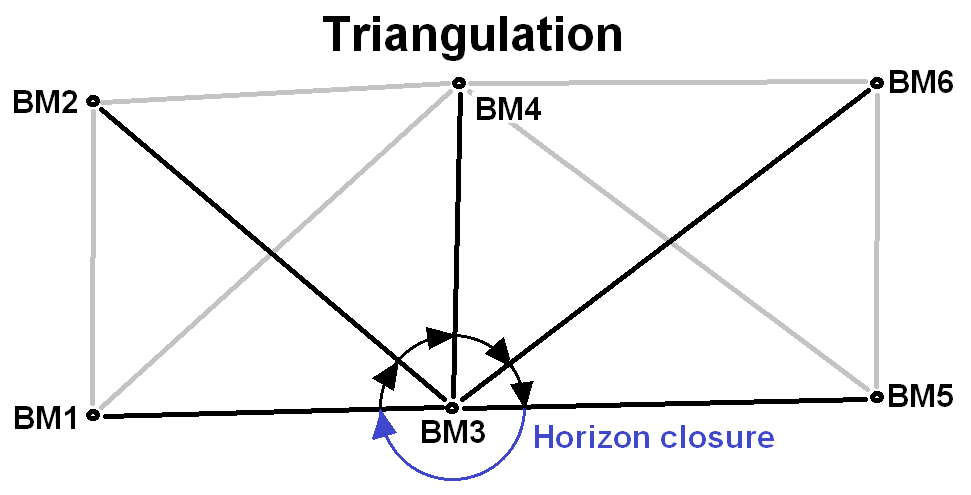

If the sum is close to 360 °, error can be divided by count of angles to make corrections (chances of reading errors are the same for each angle, don't depend on angle size).
If the sum is far from 360 °, blunder has been achieved, and measurement needs to be repeated.
Measuring vertical angle
Vertical angle is taken either from zenith (position at 0 °) or horizon (position at 90 °). Depends on the instrument if the angle of elevation or depression has to be converted manually (from zenith angle) or not.
For accurate work, it is best to measure a vertical angle at least twice: once direct, once reversed and average the result.




